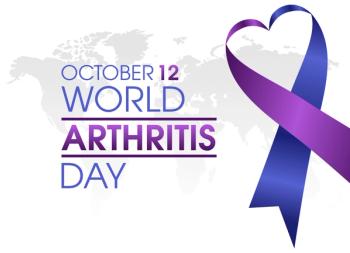
Value-Based Insurance Design: Sense and Sensibility
A look at value-based insurance design, and how it provides a way to reduce financial barriers to care for people with chronic conditions.
This article was written by Jon Christianson, PhD, Medica Research Institute senior fellow, and James A. Hamilton chair in health policy and management at the School of Public Health at the University of Minnesota.
Theresa May is the new prime minister of the United Kingdom. She has type 1 diabetes, according to LA Times columnist David Lazarus, who has the same condition.1 Lazarus points out that people in the UK with type 1 diabetes have access to the drugs and care they need at minimal cost. In contrast, many US citizens with similar health conditions face significant and growing deductibles and coinsurance rates in their insurance plans.
Payers expect that consumers confronted with these growing costs will reduce their demand for services. Research suggests that consumers do behave this way, but with little regard for which services are critical to their health and which are less so.2 Payers also hope that when consumers bear a greater share of healthcare costs they will become more engaged in managing their health.
For people with significant chronic illnesses, this reasoning is questionable. For example, people with diabetes often need access to regular care and critical medications to effectively manage their health. But higher deductibles can discourage this. The result can be poorer health outcomes that are ultimately more expensive to treat.
An Alternative Approach: VBID
Lazarus implies that healthcare costs are lower in the UK in part because people with chronic conditions face few financial barriers to accessing the care they require. Whatever you consider the merits of the UK’s healthcare system, moving toward a centralized system in the United States would entail a considerable slog through health policy thickets populated by strong interest groups and entrenched stakeholders. The prospect that this would happen anytime soon does not seem promising. So it’s reasonable to ask: Are there other ways to reduce financial barriers to care for people with chronic conditions?
University of Michigan professor A. Mark Fendrick, MD, and colleagues likely would say “yes” to that question. For 15 years they have advocated for a more “clinically nuanced” approach to health insurance coverage in the private and public sectors. Their ideas are embodied in the term value-based insurance design (VBID).
What Is “Value-based Insurance Design?”
It’s relatively easy to explain VBID, because it makes common sense. The basic idea is that health insurance should provide comprehensive coverage (eg, excluding them from insurance deductible and coinsurance requirements) for services that are of high value, while providing less attractive coverage for services that are of dubious value.3 That’s it in a nutshell. Rather than a “one-size-fits-all” approach, clinical nuance would dictate the setting of deductibles and coinsurance rates.
Under VBID, patients with type 1 diabetes and those with other serious chronic conditions would have financial access to the services they need. This access would improve their health and possibly even save costs in comparison to cost-control strategies that erect financial barriers to care for these patients. But what about services that are not supported by clinical evidence and are excluded from widely accepted practice guidelines? They would be covered much less generously, if at all, in a fully developed VBID model. It’s the classic “carrot and stick” approach.
It is important to point out that VBID is not necessarily the same as multi-tiered drug benefit designs (where patients pay more to purchase the brand version of a drug than the generic). The purpose of tiered drug coverage typically is to save money for the payer under the assumption that the medications are equivalent in content or therapeutic value. Drug coverage can be designed based on VBID principles,4 but more often “clinical nuance” is not the operative consideration.
Despite the intuitive appeal of VBID, there has been less uptake of its principles than one might expect.5 Why is this? Looking forward, are conditions now ripe for healthcare payers to more aggressively implement VBID principles?
Why Has It Been So Difficult to Implement VBID Principles?
While VBID principles seem straightforward, there clearly are obstacles on the path to VBID implementation. Some are obvious. For instance, reaching consensus on which services should receive minimal, if any, coverage is not easy, nor is determining which services, conditions, and patients merit more extensive coverage.
A second major issue is whether implementing VBID would, in fact, restrain cost growth. Fendrick and colleagues emphasize that the purpose of VBID is to improve patient and population health. However, they also recognize that any significant change in the US healthcare system will encounter serious headwinds if it adds to costs.6 “Given the pressure to constrain healthcare costs, value-based insurance design programs that exclusively reduce cost sharing have limited appeal.”7
When you think it through, as VBID advocates have, there are numerous other implementation issues that are less obvious, but nevertheless potential stumbling blocks. Ten years ago, Fendrick, Michael E. Chernew, PhD, and co-authors speculated on what these might be: VBID’s payoff may not be immediate; data limitations can make it difficult for payers to accurately target employees for VBID participation; patients and providers might misrepresent a patient’s condition in order to qualify for lower cost sharing; and issues relating to the legality of limiting coverage of some services, or for some types of patients, could arise.
These are first-level implementation issues, but there are other concerns as well. For instance, if VBID is used to lower or eliminate the cost of a particular service, it could reduce incentives for patients to seek out lower-cost treatment settings, further adding to payer costs. At the extreme, it could reduce the incentives for patients to work to reduce risk factors that contribute to their conditions. VBID’s possible impact on risk selection is also an issue for employers and payers. If VBID reduces costs for people with specific conditions, it might attract more people with those conditions into an employed group or health plan.8,9 And employees without the conditions which are treated preferentially in a VBID design might resent the cost reductions given to colleagues with the “chosen” conditions (“What about my illness? Isn’t it important?”)6.
What Has Been the Experience of Payers That Have Implemented VBID?
It is not clear how many payers actually have incorporated VBID principles in their benefit designs, although one benefits consulting firm estimates that approximately 20% of large employers do so.10 One article by independent researchers identified 76 pharmaceutical-based VBID designs implemented by a single pharmacy benefits manager.11 There also have been several case studies of individual employer plans.12,13 The general impression is that the use of VBID principles is growing but obstacles have proven to be significant, as anticipated.
The research on impacts of VBID suggests that VBID makes a significant difference in patient behaviors such as drug adherence. (As one payer observed, when you make something free more people will use it.) But these effects are not large. Programs based on VBID principles are designed and implemented differently by different payers and often are set in place along with other payer efforts (e.g. disease management programs).14 So, it is not surprising that outcomes vary in size and are sometimes difficult to attribute to VBID.
With respect to costs, significant impacts are more difficult to find: costs generally are highly variable as an outcome measure; studies are not “powered” to detect effects on costs; and all elements of potential cost savings (eg, reduced absenteeism) may not be included in study designs. Furthermore, VBID impacts on the costs of care for people with chronic conditions could occur outside the time period of the study. Finally, VBID programs to date have focused almost exclusively on “carrots” and not “sticks.” Incorporating “sticks” might improve the cost profile of these programs.
So, what can be said about payer experience with VBID to date? Conservatively, the findings of VBID evaluations have been positive with respect to impacts on patient behaviors and short-term outcomes—although the impacts are not large and are based almost entirely on medication studies.15 They are inconclusive with respect to costs. Yet the enthusiasm for VBID has not dimmed. The intuitive appeal of VBID designs for some patients or conditions is undeniable, and there have been recent developments that could accelerate their adoption looking forward.
An Improved Environment for VBID Adoption?
Four recent developments suggest that VBID adoption could ramp up in the near future.
First, the increasing emphasis on “value-based purchasing” seems consistent with VBID.16 As payers seek to purchase better quality and health outcomes for the dollars they spend, clinically nuanced benefit design is likely to receive increased scrutiny. Fendrick and colleagues, along with others,17 have recognized this opportunity and have expanded their concept of VBID to include benefit designs that encourage consumers to choose high-value providers. Using providers in the high-value tier would lower deductibles and coinsurance rates. Broadening the application of VBID principles in this way increases purchaser exposure to VBID principles but also risks diluting VBID’s focus on “clinical nuance.”
A second trend worth noting is growing public apprehension about the size of health plan deductibles, both in Affordable Care Act exchanges and private-employer coverage. Again, the concern is that they will discourage consumers from getting needed care or, if they seek care, create financial hardship. However, higher deductibles can benefit consumers financially if they result in lower premiums, or in the case of employees who work for self-insured employers, reduce rates of increase in their paycheck deductions. This discussion concerning the impact of high deductibles creates an opportunity for VBID advocates to make their case for more “clinically nuanced” coverages.
Third, the Choosing Wisely movement also has VBID implications.18 This movement includes efforts by various specialty societies to identify low-value (or no value) care and discourage its use. It can provide a platform for purchasers wishing to employ the “stick”—low or no-benefit coverage for some services—in VBID implementation. This, in turn, increases the chances that VBID will generate cost savings for purchasers, balancing the increased immediate costs of coverage for high-value services with reduced spending on low-value services. However, if VBID designs focus only on care identified by the societies, their potential impact would be limited. To date, many of the low-value services identified by specialty societies are low-volume services as well. Nevertheless, the Choosing Wisely discussion legitimatizes the notion of not covering low-value care—something that has been difficult for VBID to accomplish in practice.
Fourth, the ongoing, often vitriolic, debate over drug pricing has raised questions about how to more appropriately compensate manufacturers for the drugs they sell. One notion is that prices should reflect the value of drugs for patient care, rather than the sheer market power of manufacturers. The work of VBID advocates on how to structure benefit coverages to reflect value of care seems directly applicable to this question.19-21
An Impetus from Government?
The use of VBID appears to be growing among private purchasers, especially if tiered benefit designs are considered VBID programs. However, as noted, it is difficult to track this growth accurately. Perhaps more surprising is the growing adoption of VBID in government programs. The requirement that plans offered in Affordable Care Act exchanges cover preventive services could be viewed as an example of VBID. New rules have made the use of VBID in state Medicaid programs easier,22 and Congress is considering legislation that would expand opportunities to use VBID principles in health savings account plans8.
Most noteworthy, the Centers for Medicare and Medicaid Services (CMS) is testing a VBID model in its Medicare Advantage program.23 The model, which will run for 5 years, was launched in 7 states on January 1, 2017. Medicare Advantage plans in these states will be able to vary their benefit designs to reduce cost sharing and/or add services to enrollees with specified chronic conditions.24 The plans also can choose to structure financial incentives to reward the use of high-value providers for treatment of specific conditions.25 Three more states, as well as additional conditions, will be added in 2018.24
The evaluation of the demonstration likely will provide a basis for decisions about further expansion among Medicare Advantage plans and, as some interest groups advocate, the use of VBID in traditional Medicare as well.26 The very fact that Medicare is willing to undertake the demonstration could encourage broader take-up of VBID principles in the private sector.
Where Does This Leave Us?
While these developments are promising, the widespread adoption of VBID still faces challenges. The foremost of these may be the timing of VBID costs and benefits from the payer perspective. Eliminating financial barriers to care for people with chronic illnesses may be cost-effective over time in a single-payer system, such as exists in Theresa May’s United Kingdom. But the calculus for private payers in the United States is likely to be different.
One would expect private payers in the United States to be hesitant about health benefits strategies with upfront costs, but benefits that accrue primarily after the employee has retired or otherwise left the company, preferring programs with more immediate net benefits.27-29 VBID programs related to provider choice,30 would be more likely to meet this criterion. However, VBID advocates can find encouragement in the willingness of large employers to support wellness programs for their employees that also feature up-front costs and little hope of a near-term financial return for their companies.31-32 Apparently the discouraging timing of costs and benefits in wellness programs has not affected the sensibilities of these employers, a potentially good omen for VBID adoption!
References
1. Lazarus D. Britain's Diabetic Leader Reflects Differing Healthcare Systems, LA Times.
2. Fendrick AM, Chernew ME. "Fiscally responsible, clinically sensitive" cost sharing: contain costs while preserving quality. Am J Manag Care, 13(6 Pt 2);325-327.
3. Fendrick AM, Chernew ME. Value based insurance design: maintaining a focus on health in an era of cost containment. Am J Manag Care, 15(6);338-343.
4. Fendrick AM, Smith DG, Chernew ME, Shah SN. A benefit-based copay for prescription drugs: patient contribution based on total benefits, not drug acquisition cost. Am J Manag Care, 7(9);861-867.
5. Kapowich, J. M. (2010). Oregon's test of value-based insurance design in coverage for state workers. Health Aff (Millwood), 29(11);2028-2032. doi: 10.1377/hlthaff.2010.0809
6. Chernew ME, Rosen AB, Fendrick AM. Value-based insurance design. [Research Support, Non-U.S. Gov't Review]. Health Aff (Millwood), 26(2);w195-203. doi: 10.1377/hlthaff.26.2.w195
7. Fendrick AM, Smith DG, Chernew ME. Applying value-based insurance design to low-value health services. Health Aff (Millwood), 29(11);2017-2021. doi: 10.1377/hlthaff.2010.0878
8. Andrews M. Hitch Keeps Many High-Deductible Plans From Covering Chronic Care Up Front. Kaiser Health News. Retrieved
9. CDC. Understanding Value-Based Insurance Design. CDC Issue Brief. Retrieved from
10. Aon Hewitt. 2014 Healthcare Survey: The Future of Healthcare: Aon Hewitt Vision 2020: Aon Hewitt.
11. Choudhry NK, Fischer MA, Smith BF, et al. Five features of value-based insurance design plans were associated with higher rates of medication adherence. [Research Support, Non-U.S. Gov't]. Health Aff (Millwood), 33(3);493-501. doi: 10.1377/hlthaff.2013.0060
12. Hirth RA, Cliff EQ, Gibson TB, McKellar MR, Fendrick AM. Connecticut's Value-Based Insurance Plan Increased The Use of Targeted Services and Medication Adherence. Health Aff (Millwood), 35(4);637-646. doi: 10.1377/hlthaff.2015.1371
13. Choudhry NK, Fischer MA, Avorn J, et al. At Pitney Bowes, value-based insurance design cut copayments and increased drug adherence. [Research Support, Non-U.S. Gov't]. Health Aff (Millwood), 29(11);1995-2001. doi: 10.1377/hlthaff.2010.0336
14. Look KA. Value-based insurance design and medication adherence: opportunities and challenges. Am J Manag Care, 21(1);e78-90.
15. Tang KL, Barnieh L, Mann B, et al. A systematic review of value-based insurance design in chronic diseases. [Research Support, Non-U.S. Gov't Review]. Am J Manag Care, 20(6);e229-241.
16. Butcher, L. (2009). Value-based insurance design. Biotechnol Healthc, 6(4);41-44.
17. Robinson JC. Applying value-based insurance design to high-cost health services. [Research Support, Non-U.S. Gov't]. Health Aff (Millwood), 29(11);2009-2016. doi: 10.1377/hlthaff.2010.0469
18. Wolfson D. Taking Stock of Choosing Wisely. HealthAffairs Blog. Retrieved from
19. Fendrick AM. Dr Mark Fendrick Outlines Progress in VBID. AJMC Newsletter. Retrieved from
20. Burns J. Here's why specialty pharmaceuticals need value-based insurance design. Health Journalism Blog. Retrieved from
21. Buxbaum J, deSouza J, Fendrick AM. Using Clinically Nuanced Cost Sharing to Enhance Consumer Access to Specialty Medications. Am J Manag Care, 20(6);e242-e244.
22. Center for Value-Based Insurance Design. (2016a). New Regulations Permit Use of Value-Based Insurance Design in State Medicaid Programs. V-BID Center Brief. Retrieved from
23. Centers for Medicare & Medicaid Services. (2016). Medicare Advantage Value-Based Insurance Design Model. Retrieved from
24. Morse S. CMS releases Medicare Advantage value-based insurance design model. Healthcare Finance News. Retrieved from
25. Congress. S.1396 - Value-Based Insurance Design Seniors Copayment Reduction Act of 2015. Retrieved from
26. Hanley S. CMA Comments re: Medicare Advantage (MA) Value-Based Insurance Design (VBID) Model. Center for Medicare Avocacy. Retrieved from
27. Dalzell MD. 5 threats to value-based insurance design. Manag Care, 20(10);28-30, 33-24.
28. Eldridge GN, Korda H. Value-Based Insurance Design: What Do We Know About What Works? Issue Brief: Altarum Institute.
29. Eberle BJ, Radloff T. Value-Based Benefit Design Programs: Benefits, Drawbacks and Future. Self Funding Magazine. Retrieved from
30. Center for Value-Based Insurance Design. V-BID in Action: A Profile of Connecticut's Health Enhancement Program. V-BID Center Brief. Retrieved from
31. Lewis A, Khanna V. Is It Time To Re-Examine Workplace Wellness 'Get Well Quick' Schemes? HealthAffairs Blog. Retrieved from
32. Lewis A., Khanna V, Montrose S. Workplace Wellness Produces No Savings. HealthAffairs Blog. Retrieved from
Newsletter
Stay ahead of policy, cost, and value—subscribe to AJMC for expert insights at the intersection of clinical care and health economics.

















































